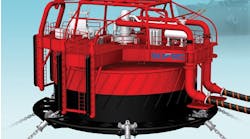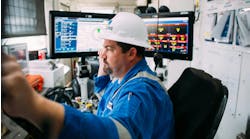Technology-based asset valuation improves prediction of recoverable reserves
Gaining knowledge for quicker commercial decisions
Martin Holt, Tammy Tiedt; Object Reservoir
Areservoir modeling technology has been developed that has changed modeling from a complicated specialty to a day-to-day decision-support activity. Conventional fluid flow modeling requires a great deal of time to “re-grid” reservoirs. With Resolve software, changes are as simple as drag-and-drop because adaptive meshing capabilities conform to reservoir geometries/properties and can scale automatically to the resolution needed.
This automated functionality makes it easy to analyze technical data and construct models rapidly, generating a precise predictor of future performance.
Operators’ income statements reflect the benefits of the most lucrative price environment our industry has ever seen. These soaring commodity prices are also creating an acquisitions market that is promoting aggressive buyer behavior. In many cases, the result is downright overpayment for producing properties. However, there are some companies conquering current market conditions by adding value after the purchase.
Unless you leave it all to serendipity, operating success and profitability through acquisitions is predicated on being able to accurately assess the value of properties.
Traditionally, technical professionals making investment decisions have been forced to find a certain balance between reliance on the seller’s valuation and performing extensive analysis that cannot be executed in a timely fashion. Often, it reaches a point of diminishing returns. Over the last few years, several companies have turned to technology to make this process more efficient.
The included examples detail two applications of Resolve, which were used to influence significant investment decisions. The first case involved PetroQuest Energy, an independent energy company focused on East Texas, Arkoma basin, South Louisiana, and the shallow waters of the GoM. PetroQuest was interested in quantifying potential recoverable reserves for properties in the Wilcox trend in South Texas.
The second example illustrates work performed by Range Resources, an independent oil and gas company that operates in the US Appalachian, Southwestern, and Gulf Coast regions.
Range sought to understand the economic potential of a reservoir they considered acquiring, including determining whether additional wells would be required to effectively drain the reservoir.
In each of these cases, the clients were able to build confidence in their investment decisions over a short period of time.
Quantifying reserves
Object Reservoir teamed with PetroQuest Energy in a project that quantified potential recoverable reserves for properties in the Wilcox Trend in South Texas.
By first characterizing the reservoir based on current well performance and then building models with Resolve’s Virtual Well capability, PetroQuest and OR were able to determine the financial viability of drilling two new wells in each of the two properties. The team built four virtual well models that enabled creation of a probable production forecast over a three- to four-year time horizon. The model also demonstrated the potential production impact of hydraulically fracturing one of the existing wells.
“Given the limited opportunities in today’s acquisition marketplace it becomes essential to have as much competitive advantage as possible,” says Mark Castell, PetroQuest asset manager.
Reservoir economic potential
Range Resources used the technology to assess the economic potential of a reservoir they were interested in acquiring.
“As is often the case in acquisition decisions, Range Resources was presented a potentially attractive asset, but needed to make our decision in less than a month,” Hugh Wilbanks, Range’s senor staff reservoir engineer says.
“The asset’s owner estimated there were 38.1 bcf in place, as calculated from a decline curve analysis. We wanted to quickly test various development and production hypotheses to determine the economic viability of the reservoir.”
Working with a structure map and 110 days of production data, the team built a reservoir model in one week. After validating reserve estimates, the team gained a better understanding of reservoir properties.
They tested various production hypotheses quickly, which resulted in a production forecast for the existing well. The single well forecast showed that it was not necessary to drill an additional well to drain the reservoir. Also, a distant seismic bright spot was noted, which indicated additional reserves were in communication with the initial well.
Interactive workflow with breakthrough technology
Both cases were successful because the asset teams used an interactive workflow and breakthrough technology. The teams were able to combine information, such as geophysics, logs, and pressure and production data, which is traditionally available in a data room.
Instead of determinations based on strictly geological or engineering information, the resulting interpretation honored all of the data. They gained knowledge of the reservoir to support their commercial decisions. Although the applications varied, the body of knowledge that was created allowed geologists, geophysicists, and engineers to act on these opportunities in time to make a difference.
The time savings affects day-to-day workflow and shortens time-to-value of development and operating decisions. Pending lease turnovers in the GoM and an increasing need for more efficient property valuation makes this workflow highly valuable for a single reservoir. When applied to several reservoirs and across the asset life cycle, it becomes an effective portfolio management tool.•




